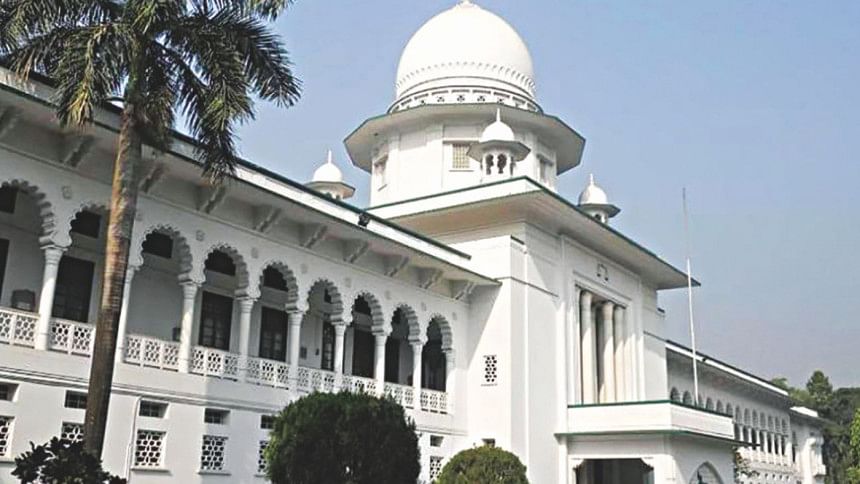REVIEW OF A CONSTITUTIONAL AMENDMENT

This essay seeks to discuss briefly two fundamental issues concerned with judicial review of constitutional amendment in Bangladesh, such as – on what grounds a constitutional amendment could be held repugnant and how the court would justify exercise of its judicial power to hold a constitutional amendment repugnant. In other words, what legal criteria the court should rely on for deciding validity of a constitutional amendment, and how the court would account for its jurisdiction in deciding validity of a constitutional amendment.
In view of the background legacy of Bangladesh legal system, it appears that a constitutional amendment could be adjudged repugnant at least on three grounds namely, lack of legislative competence, lack of procedural compliance and lack of substantive compatibility. Invariably, lack of legislative competence refers to a situation when any legislative body or authority brings in a constitutional amendment despite having no power to do so. Examples will include promulgation of ordinance by the president seeking to amend the Constitution. Similarly, passing an amendment bill by a simple majority of its members of parliament will typify lack of procedural compliance. And lack of substantive compatibility will occur if any constitutional amendment stands at so much odds with the existing constitutional provisions or introduces so much changes that even harmonious interpretation cannot rub down their mutual incongruences.
As a matter of fact, the aforementioned grounds came into discussion before the court in a number of cases concerning validity of constitutional amendments. For example, the grounds on which the Supreme Court has annulled the 5th constitutional amendment [Italian Marble Works Ltd v Bangladesh (2010) 62 DLR 70] and the 7th constitutional amendment [Siddique Ahmed v Bangladesh (2011) 63 DLR 565] include lack of legislative competence and lack of procedural compliance. Again, the matter in issue in the cases concerning validity of the 8th constitutional amendment [Anwar Hossain Chowdhury & Others v Bangladesh (1989) BLD (SPL) 1] or the 13th constitutional amendment [Abdul Mannan Khan v Bangladesh (2012) 64 DLR (AD) 169] was mainly substantive compatibility.
Undeniably, among the above-mentioned grounds, determining substantive compatibility of a constitutional amendment vis-à-vis the Constitution is the most difficult task because in the last resort a constitutional amendment is also a part of the Constitution. Therefore, determining validity of a constitutional amendment vis-à-vis the Constitution necessitates a special and convincing tool. The Supreme Court resolved this issue in the 8th Amendment Case by laying down a test for determining substantive compatibility of a constitutional amendment vis-à-vis the Constitution – which is famously known as 'the basic feature doctrine' or 'the basic structure doctrine'. In many respects, the 8th Amendment Case could be designated as the most important case in the history of the legal system of Bangladesh. One such reason is that it marked the beginning of judicial review of constitutional amendment in Bangladesh.
Besides, the Supreme Court, in the 8th Amendment Case, explained the legal basis of its jurisdiction to review validity of a constitutional amendment. In particular, Justice Badrul Haider Chowdhury argued that the authority to decide constitutionality of any laws including a constitutional amendment was vested in the Supreme Court in virtue of article 7 of the Constitution. The aforesaid argument was later followed in the cases in which the Supreme Court declared a number of constitutional amendments repugnant (see Kawser Ahmed, 'Misreading or Leapfrogging? SC's Power to Review Constitutional Amendment', The Daily Star, 22 August 2017, p. 12).
Evidently, the majority of judges in the 8th Amendment Case heavily drew on jurisprudence from Indian jurisdiction in shaping their ideation of the basic feature doctrine. Unfortunately, the judges seemed to have overlooked the fact that the Constitution of Bangladesh did contain tangible hints on the basis of which an indigenous doctrine could have been viably developed so as to accommodate judicial review of constitutional amendment on the grounds of lack of substantive compatibility.
For instance, the original article 26of the Constitution unqualifiedly provided that laws which were inconsistent with the fundamental rights would become void and no laws would be made inconsistent with the fundamental rights. By the second constitutional amendment, a new clause was inserted into article 26 providing that the earlier two clauses [26(1) and 26(2)] of the same provision would not apply to any constitutional amendment. The aforesaid amendment endorses the fact that the legislators viewed constitutional amendments as more on a par with 'other laws', and for the same reason, excepted them from judicial review if they were inconsistent with the fundamental rights. To put it differently, article 26(3) implies that constitutional amendments are susceptible to judicial review and could be held repugnant for being inconsistent with any provisions of the Constitution other than the fundamental rights. Hence, it appears that any theory of judicial review of constitutional amendment in Bangladesh context must take account of article 26 of the Constitution if it wants to claim itself as complete.
The writer is an Advocate, Supreme Court of Bangladesh.

 For all latest news, follow The Daily Star's Google News channel.
For all latest news, follow The Daily Star's Google News channel. 



Comments